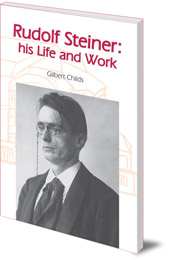Quick Look
This is a concise illustrated introduction to Steiner's life and work, describing how many of his ideas have been put into practice and are still giving inspiration and guidance to many people all over the world.
Description
A new edition of this concise introduction to Steiner's life and work.
The philosopher Rudolf Steiner was one of the most original thinkers of the twentieth century. His writings cover a wide range of subjects and he made valuable and influential contributions in many fields, including education, science, medicine and social reform. The basis of his research was the science of the spirit which he called anthroposophy. He maintained that material science could never comprehend the whole of nature, as it excluded the realm of the spirit. Bridging the physical and spiritual worlds, anthroposophy would show the way towards a true understanding of humanity and its relation to the universe.
This is a concise illustrated introduction to Steiner's life and work, describing how many of his ideas have been put into practice and are still giving inspiration and guidance to many people all over the world.
Table of Contents
1. Researching in Two Worlds: Personal development; Steiner as scholar and teacher; Weimar years; Berlin; Time to go public
2. From Theosophy to Anthroposophy: Early initiatives; East and West -- an unhappy alliance; The Krishnamurti scandal; Christ in the world
3. Art and Human Nature: A new art of movement; The first Goetheanum; The principle of threefolding
4. A New Social Order: The threefold social order; A portent realized; Steiner education -- a thumbnail sketch; Science and religion; Medicine for the whole person; Triumphs and disasters
5. The Final Years: The second Goetheanum; The birth of biodynamic farming; Children in need of special care; Last days
6. A Continuing Story: A champion of freedom; Seventy years on; A truly holistic science
Reviews
'A concise and readable illustrated introduction to Steiner that covers the full range of his ideas and work. Highly informative also about those in his circle of influence so that one builds up a historical as well as a conceptual picture.'
-- Scientific and Medical Network Review, Winter 2003
'Gilbert Childs' writing is succinct and lively, providing the reader with enough detail to explain Steiner's basic ideas on education, religion, art, agriculture, social order and everything else! This is a concise introduction to anyone who wants to know more about the man and his thinking. Childs has clearly discovered a way of making Steiner's ideas accessible to all.'
-- Jackie Harris, Worcester Evening News, 13 December 2003
Author
Gilbert J. Childs is a Floris Books featured author. Read all about this author's life and work on our dedicated author page.
Gilbert J. Childs (1923-2013) taught at Steiner schools in Germany and England. He later qualified as a teacher in the state system and lectured in English. In his retirement he was an avid biodynamic gardener.
Links
Also by Gilbert Childs:
Steiner Education in Theory and Practice

